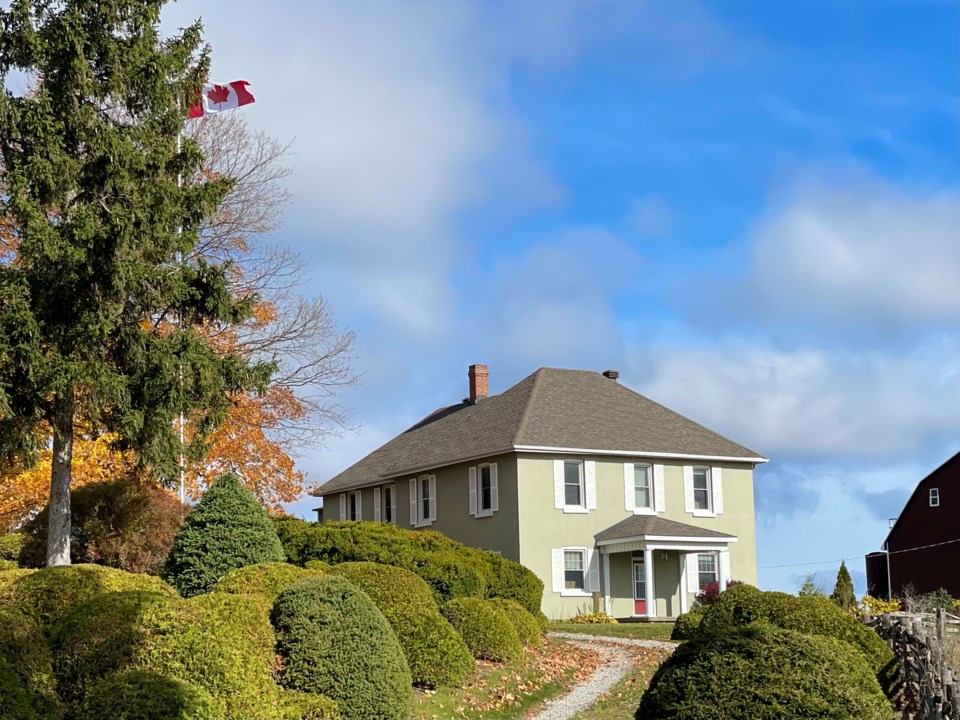A property which housed the first curling match in Innisfil is on its way to being designated as a heritage property.
Council agreed Nov. 8 to move forward with designating the property at 6225 Yonge St. under the Ontario Heritage Act. The site was first listed on the town’s heritage register in 2021.
The future of the property is currently up in the air, as it is the basis of a planning application submitted to the town in August and discussed at a special council meeting in September.
The application as submitted called for the demolition of the buildings on the property, including the mid-1800s farmhouse and the associated farm structures. As the property was listed, a 90-day window opened to designate the property and save the structures.
But that window is set to close at the end of November and council needs to act, suggested Deb Crawford, vice-chair of the Innisfil heritage advisory committee.
“We want to move forward with the intent to designate because if we don’t, the opportunity will be lost,” she told councillors during her delegation. “What we’re looking for, we would like to see a future for this as part of the community.”
The property had been owned by the Boyes family and the Sinclair family for the entirety of its existence, prior to the retirement of Keith and Ruth Sinclair about four years ago. The Boyes family had built the original house in the mid-1800s, while the Sinclairs renovated it to the condition it is in today after the family purchased it in 1938. Keith Sinclair took over the operation in 1964.
To qualify for heritage designation in Ontario following the introduction of Bill 23, a property has to satisfy two of the nine criteria listed in the Act. The property at 6225 Yonge St. meets five of the nine, Crawford said, including:
- Is representative of an early style
- Has direct association with persons and activities significant to the community
- Is important in defining the character of the community
- Is historically linked to the community
- Is a landmark
However, under the Ontario Heritage Act, if a property is designated, the entirety of it is protected, not just a home or any other structure. That was one of the concerns raised by the proponent of the development.
“We ask that staff consider working with the owner through the designation process … in considering alternative development options,” said Evan Sugden, heritage planner with The Biglieri Group. “We feel there is an opportunity through the timelines set out in the Heritage Act to provide us with that opportunity to do the reporting independently and then bring that back to staff.”
That time would allow his group to conduct their own heritage impact assessment on the property. The proponents, he said, want to find a balance between conservation and development.
“We feel that there’s opportunity to deal with appropriate conservation on-site while also allowing for the balance of the lands to be developed for new housing,” Sugden added.
Crawford stressed she agreed, and even though the heritage committee was pushing for designation, such a move wouldn’t curtail any development on the land.
“The designation bylaw is negotiated with the owner and the designation notice goes to the property; it is registered to the property,” Crawford said. “So, if the property is 90 acres, it is 90 acres that is designated. But that does not mean that it’s 90 acres that is frozen in time.”
Town director of planning and growth Andria Leigh further clarified for council that when a plan of subdivision is brought to council for approval that the designation couldn’t be further scoped to one specific parcel of land, allowing development to continue on the remaining area.
It could also determine which buildings on the property would be saved. Crawford told council she is of the opinion that not only should the house remain standing, but so should some of the farm structures, such as the barn and the silo.
That’s the kind of negotiation that can take place during the time between when council declares its intent to designate and when the designation comes into effect. Following the motion passed by council last week, the notice to designate has to be circulated within 120 days. From that point, anyone opposing designation would have 30 days to file an appeal.
“(There) is plenty of time for conversation, for dialogue, for changes,” Crawford said.



